Woodpeckers are common to be found in America. The amazing talents of woodpeckers make them special creatures. These vibrant birds inhabit the woods and use their beaks to prick trees.
Because they have a sweet tooth for hummingbird nectar, woodpeckers occasionally go on adventures right at your backyard bird feeder. The Pileated Woodpecker is the biggest woodpecker found in Illinois. At 16 to 19 inches, it is also the biggest woodpecker in North America (40-48 cm).
This woodpecker left rectangular traces behind. The Downy Woodpecker, which measures just 5 to 7 inches, is the smallest woodpecker in Illinois (12.7-17.7 cm).
They are also the smallest woodpeckers in North America, measuring about 0.7 to 1 oz. It just so happens that in Illinois, the tiniest woodpecker is also the easiest to see. Due to its apparent lack of sensitivity to people, the Downy Woodpecker is frequently seen in backyards.
There are 400 bird species in Illinois alone, out of the 800 species found in North America. You could encounter one of seven of them on your subsequent visit to the state. It’s understandable that the 58,000 square mile state, which borders the Mississippi River and Lake Michigan to the north, has developed into a massive agricultural region.
The state currently supports a diverse range of ecosystems as a result. The dead trees offer all the cavities woodpeckers want for nesting and pecking.
The vibrant birds continued to spread, and if you want to learn about different species of woodpeckers in Illinois, then this guide covers them all.
| Image | Name |
|---|---|
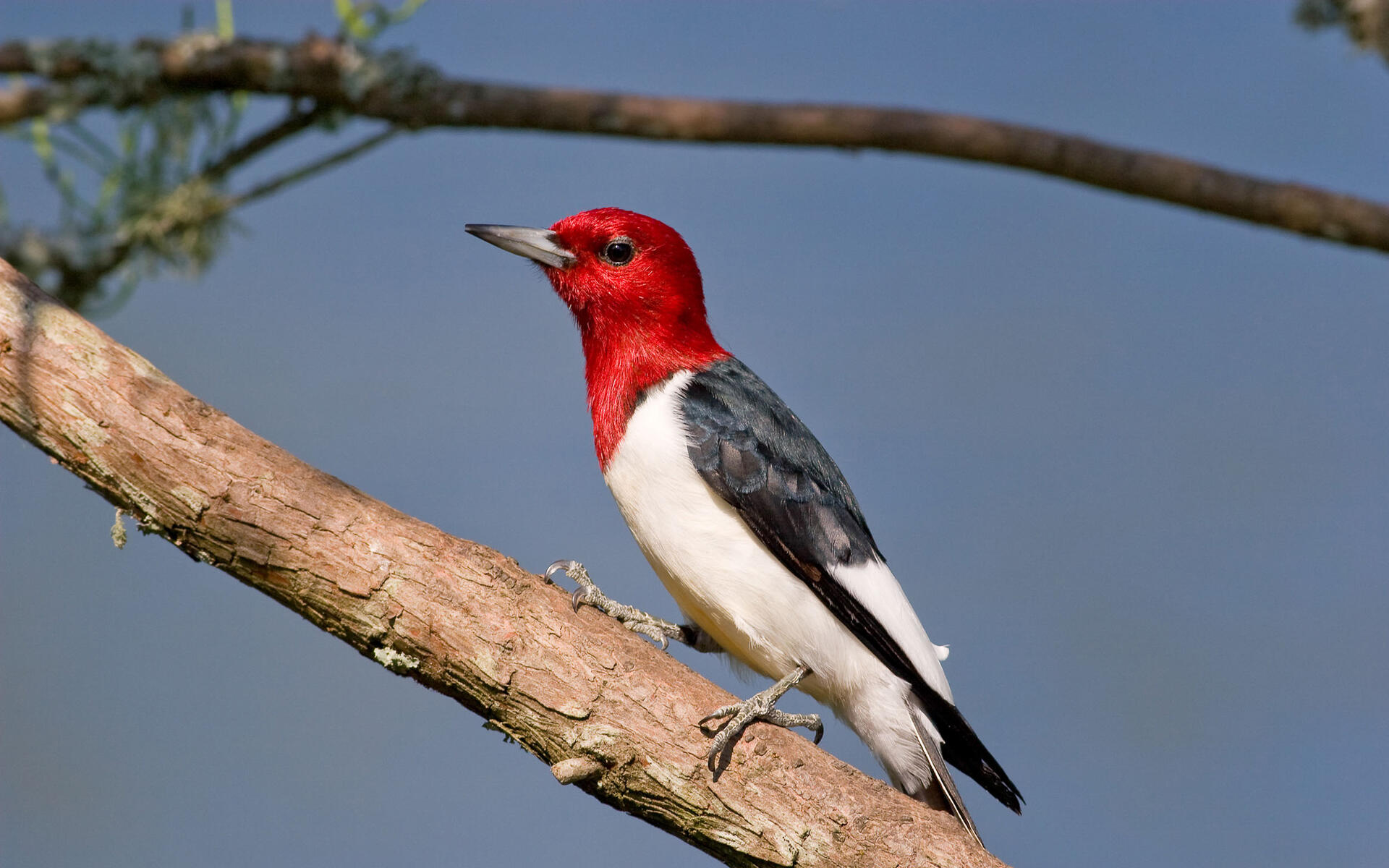 | Red-Headed Woodpecker |
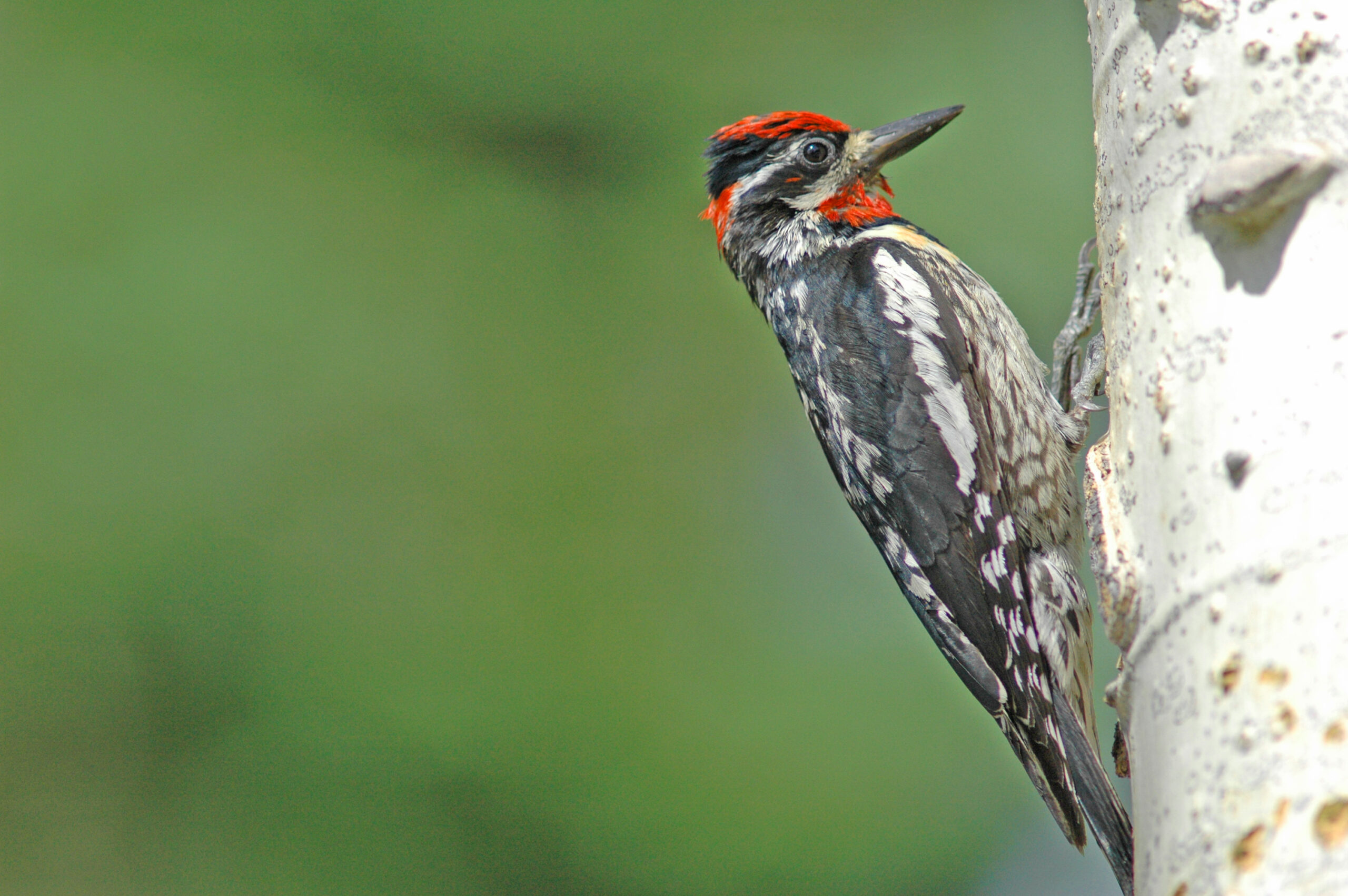 | Yellow-bellied Sapsucker |
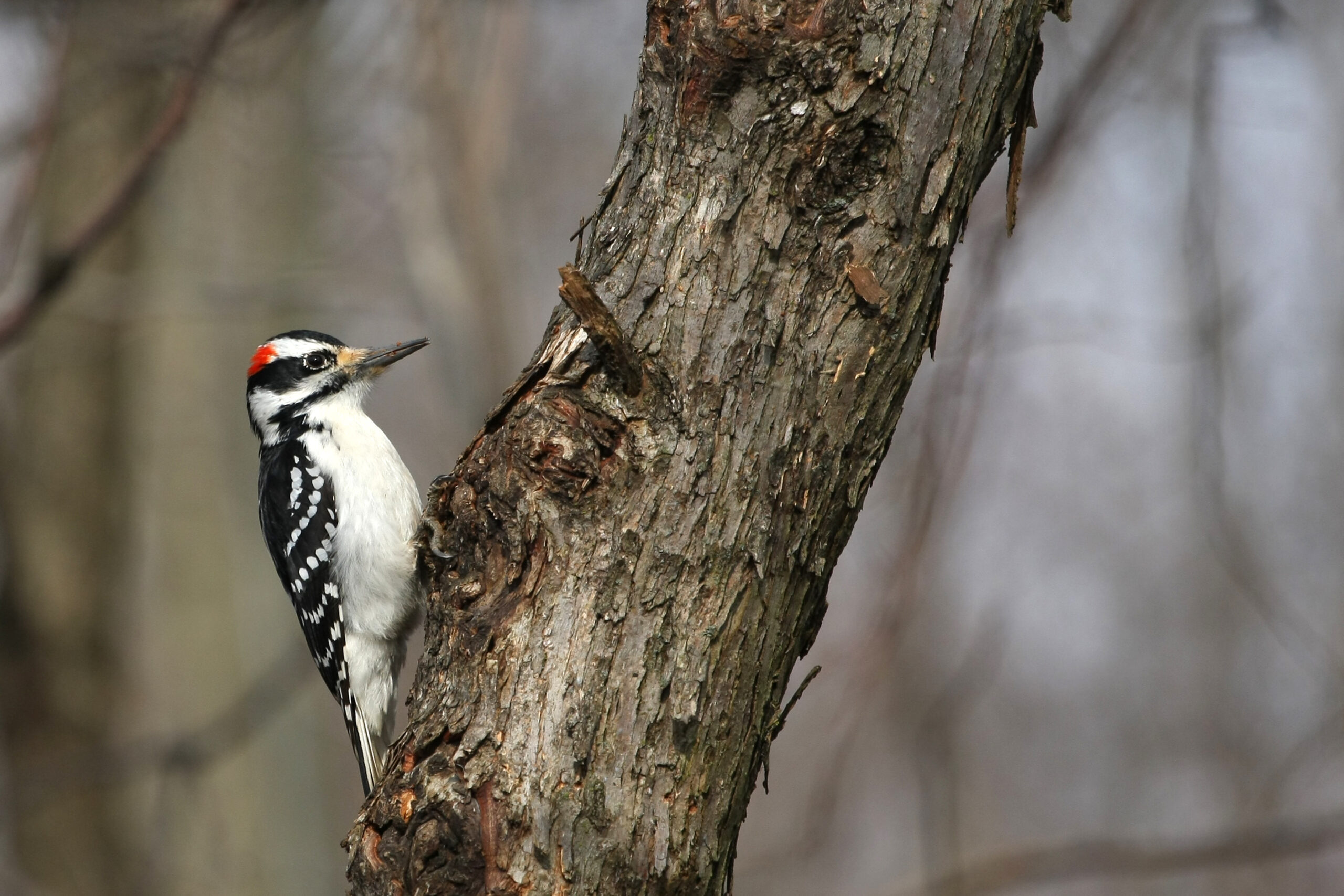 | Hairy Woodpecker |
 | Northern Flicker |
 | Pileated Woodpecker |
 | Red-Bellied Woodpecker |
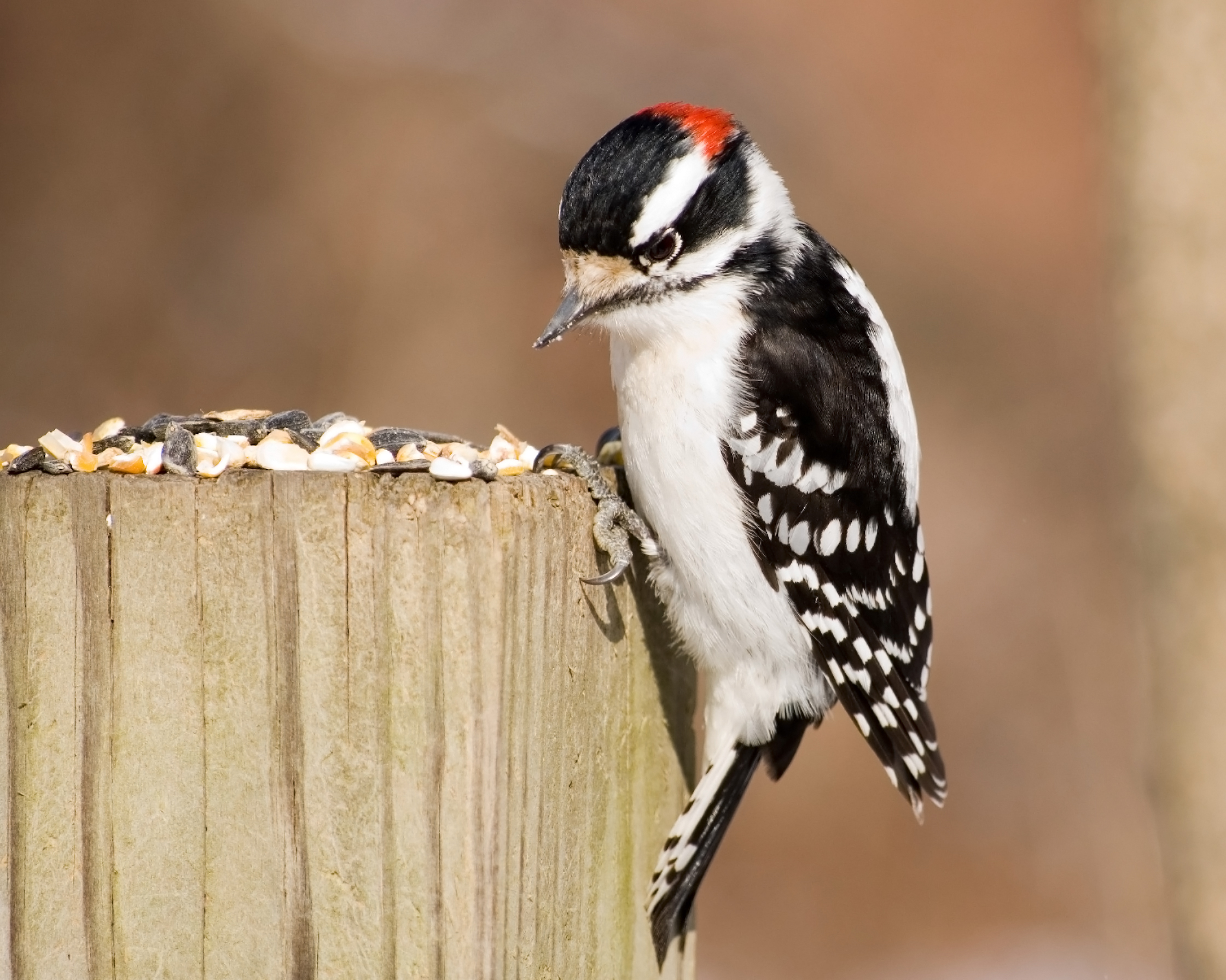 | Downy Woodpecker |
Different Species of Woodpeckers in Illinois
In Illinois, there are different species of woodpeckers that are present in different areas.
1. Red-Headed Woodpecker
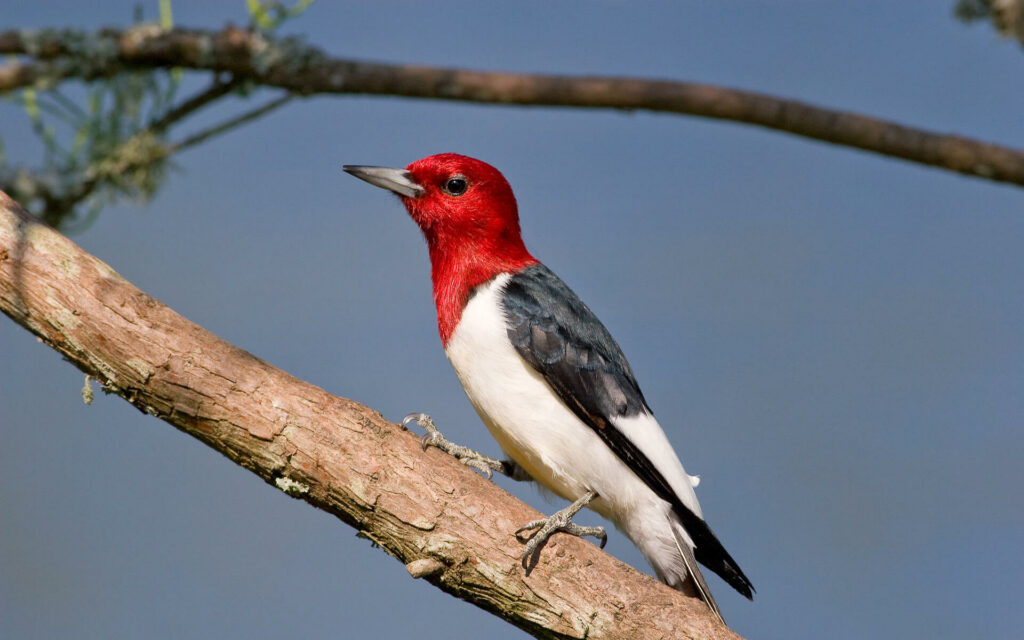
Red-headed woodpeckers may be spotted all year long in Illinois. This bird’s head is coated in vivid red plumage, as its name suggests. With a wide, white stripe across the wings, their top portions are predominantly black.
Their small, strong bills are ideal for striking into the wood, and they are medium-sized woodpeckers. Red-headed In addition to groves, farmlands, marshes, and orchards, woodpeckers may be found in a wide range of habitats.
Red-headed Finding woodpeckers is made easier by their characteristic shrill cry, and another important clue that one is close to is the loud pounding they make when foraging.
However, they prefer woods and forests with open understories and clearings. Because they are skilled planners, these woodpeckers often hide excess food in tree cracks for later use.
Food
They consume a variety of foods, primarily insects, along with fruit, berries, acorns, and beech nuts. Even little rodents, earthworms, and other birds’ eggs and young will be consumed by them.
2. Yellow-bellied Sapsucker

Almost the size of a robin, the Yellow-bellied sapsucker woodpecker is a little bird. Its Wingspans range from 13.4 to 15.8 inches (34-40 cm). These birds have a redhead and bodies that are black and white.
On their heads, males have a redder hue than females, which is lighter. On each of their wings are white flecks. The color of their necks can be used to determine the sexes.
Habitat
The habitat of this species is coniferous woods. To get sap wells to feed, they prefer birch or maple trees. Parks, cemeteries, and residential areas are where wintering woodpeckers spend their time.
They reside in bottomland woods in the southern section of the state. Typically, their bellies have yellow undertones. The females have black throats, while the males have red ones. In order to cling to the trees, its tail is stiff. The chick lacks any red color and has brown feathers.
A Yellow-bellied Sapsucker can also be identified by its loud, mewing, or squealing call, which is another way to identify it. It is a woodpecker that migrates.
In the northern region of Illinois, it is more likely to observe the bird during the winter and less frequently during the summer. Typically, they move during the night.
3. Hairy Woodpecker
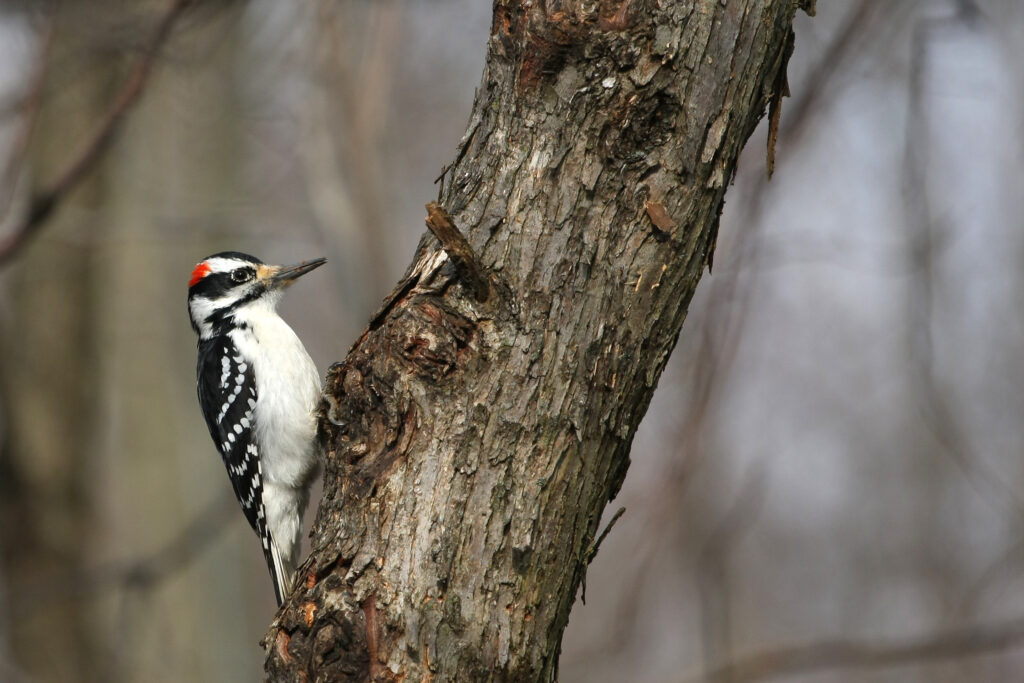
Hairy woodpeckers may be found in residential areas and woodlands, just as downy woodpeckers. They may be found in southern marshes, on oak trees, and around beaver ponds.
The outer tail feathers and back of the hairy woodpecker are white. They are less frequent yet bigger than downy woodpeckers.
Unlike their downy breed, hairy woodpeckers spend most of their time at the bases of trees. They extend their necks when flying and frequently turn their heads from side to side.
The birds’ loud screams are well-known. They crane their necks and spread their wings at a 45-degree angle to the rear. They could occasionally come to your backyard as well.
Layout some peanuts or black oil sunflower seeds for hairy woodpeckers if you want them to visit your yard. Since they have the greatest need for food in the winter, they are more likely to come.
4. Northern Flicker

The most prevalent species of woodpecker in the US is the northern flicker. They are prevalent in practically every state. They have colorful heads and dots all over their backs and bellies.
They glide and flap alternately every few seconds while flying, rising and falling gracefully. They spend most of their time on the ground, which makes it pretty simple to locate them.
They may be found in open areas, including fields and city parks. Since they’ll be getting their meals there, they’ll be near communities. Flickers in the north eat seeds, berries, and insects.
While you wait for them, spread the food out in the feeder. They probably won’t be drawn to feeders, though. You could be lucky enough to see a breeding pair of flickers if you place a nest box.
5. Pileated Woodpecker

Pileated Woodpeckers are another common type of woodpecker species found in Illinois. They mostly consume carpenter ants from dead trees and downed logs, but they will also consume beetle larvae, termites, and other such pests, as well as fruit and nuts, including elderberries, dogwood, and sumac berries.
They are frequent backyard feeders specifically for the suet but are often found in forests or woodlands that have been inundated and have a lot of dead trees.
Given that it is almost as big as a crow, it is one of the largest woodpeckers. Its underside is white when it is flying, and it is mostly black with a white stripe.
On the cheek, males have an extra red stripe. They emit a deep, powerful pounding sound as well as a loud, shrill cry. Pileated Woodpeckers prefer dead trees as breeding locations.
Every year, they typically build a new nest, while other bird species utilize the previous one. Usually, they produce 3–5 white eggs.
Keep an eye out for them since they leave recognizable rectangular holes on trees. Additionally, they consume suet, hulled sunflower seeds, peanuts, black oil sunflower seeds, mealworms, and peanuts. In order to draw a breeding couple, you may also try erecting a nest box.
6. Red-Bellied Woodpecker
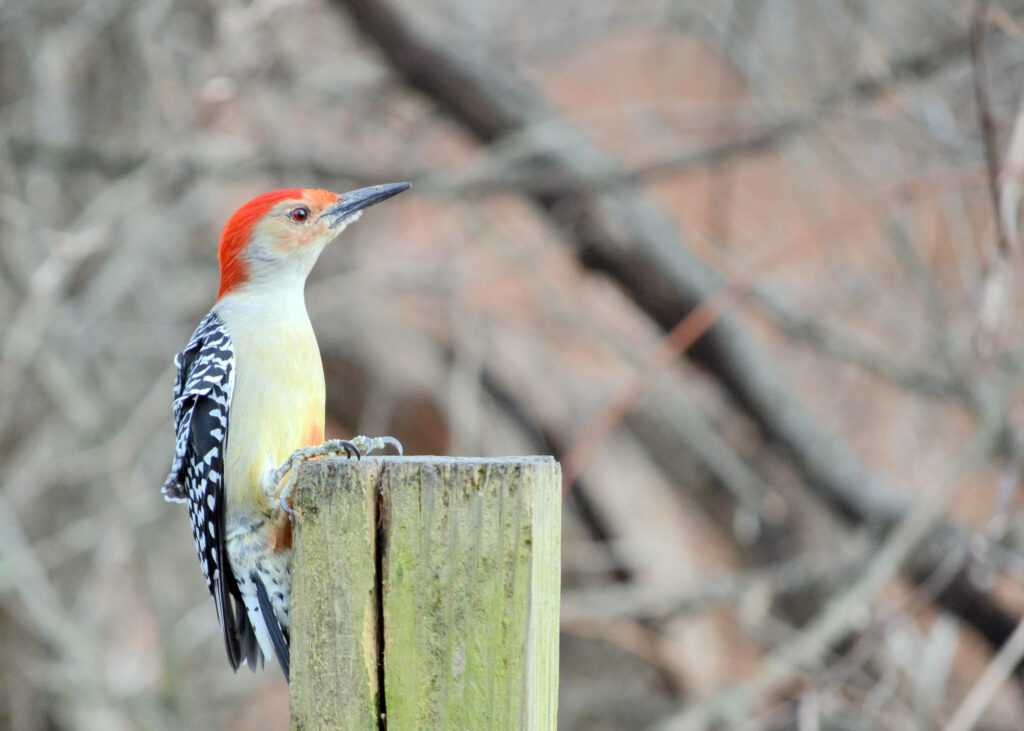
Red-Bellied In Illinois, woodpeckers may be spotted often all year long. Due to their opportunistic feeding style, they also consume a significant quantity of plant matter in addition to insects.
They have black and white striped backs and are medium-sized woodpeckers. Look for them perched along main branches and on the slopes of huge trees. They peel and pluck the bark off rather than drill as much as other woodpeckers do.
Habitat & Food
In reality, they have recently expanded their habitat northward, and it appears that their number is quietly growing. Their ability to thrive in a variety of environments, such as swamps, groves, woods, and forests, as well as parks, suburbs, and other urban areas, maybe the key to their success.
They may occasionally eat tiny reptiles, fish, and even the eggs of other birds. Despite its name, Red-bellied Woodpeckers often have pale bellies; instead, the red on the backs of their heads is more vivid.
For a greater chance of finding them, listen for their rolling call; they are usually rather vocal in the spring and summer.
7. Downy Woodpecker

Downy In Illinois, woodpeckers may be found in a variety of areas. Naturally, they may be found in deciduous forests with access to water.
You are undoubtedly familiar with them because they are a common sight in backyards. These birds are smaller than other species and have shorter beaks.
On the back of the head, male woodpeckers have a unique red patch that is absent in females. Fortunately, it’s simple to attract this kind of woodpecker to your garden. They could be seen sipping sugar water from hummingbird feeders.
Check out this article on Types of Finches in Illinois.
Conclusion
This discussion listed all of the different species of woodpeckers in Illinois that you can commonly see. We shared the info on where they live and how they survive, also what they prefer to eat.
For more, see FAQ.
FAQ
Does Illinois have red-headed woodpeckers?
In Illinois, the red-headed woodpecker is a frequent migratory, summer resident, and winter resident. Migration season starts in February.
May to July is when birds lay their eggs. The nest is inserted into a hole in a living or dead tree, a telephone pole, or if one is available, a nest box.
Last Updated on March 22, 2023 by Lily Aldrin

Thank you so much for educating me on how many woodpeckers I have to look forward to seeing in my backyard! So far, I’ve only seen a Flicker, Downy, & Red Headed of the species. Oh, if I could just see the Pileated- I think I would that would be the coolest bird sighting!